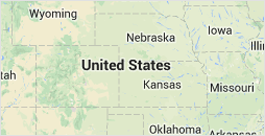Emily Clarke
PHONE NUMBER : -----
Map

What are Dev Environments in Kubernetes?
Kubernetes, also known as K8s, is a powerful system that's changed the face of modern software development. The open-source platform makes it easy to create microservices-based applications, automating their deployment, scaling and management.
Kubernetes dev environments are how teams work efficiently with the system. Environments contain all the necessary tools and resources required to make the most of Kubernetes. They help developers create, deploy, test and even debug containerized software running on a K8s cluster.
Development environments are versatile, supporting different configurations and new tool installations while keeping things secure and updated.
What Types of Kubernetes Dev Environments are Available?
There are many ways to configure development environments for Kubernetes. They're all unique and established based on the parameters of the project and the needs of the larger development team. That said, most environments fall into one of three categories.
The first is a local development environment. As the name suggests, they run on local workstations. These environments use a local computer's resources and computing power.
Local environments can be beneficial for many reasons. They allow programmers to work in isolation, providing full control over their work without worrying about interfering with other teams' progress. Many developers prefer local environments because they promote faster code iteration, making it easier to make work production-ready in a fraction of the time. They're also known for fostering collaboration and providing ultimate flexibility.
The second type of development environment is remote. A remote Kubernetes development environment is cloud-based. Developers can build, preview, test and deploy applications in an entirely cloud-based environment to maximize scalability and flexibility.
Remote environments can make the development process more efficient without relying on local resources to ramp up productivity.
Finally, we have a local-to-remote Kubernetes environment. This third option offers the best of both worlds while addressing limitations in remote and local environments. Naysayers of local work say that it's impossible to replicate a Kubernetes-based application due to resource variability between cloud and local systems. Meanwhile, those who don't like remote environments say that waiting for applications to deploy in remote clusters slows development.
Local-to-remote environments address those concerns, allowing developers to quickly see the effects of code changes and test updates with remote dependencies in a remote cluster.
Author Resource:-
Emily Clarke writes about the different platforms providing high-quality developer and test environments. You can find her thoughts at Kubernetes infrastructure blog.
